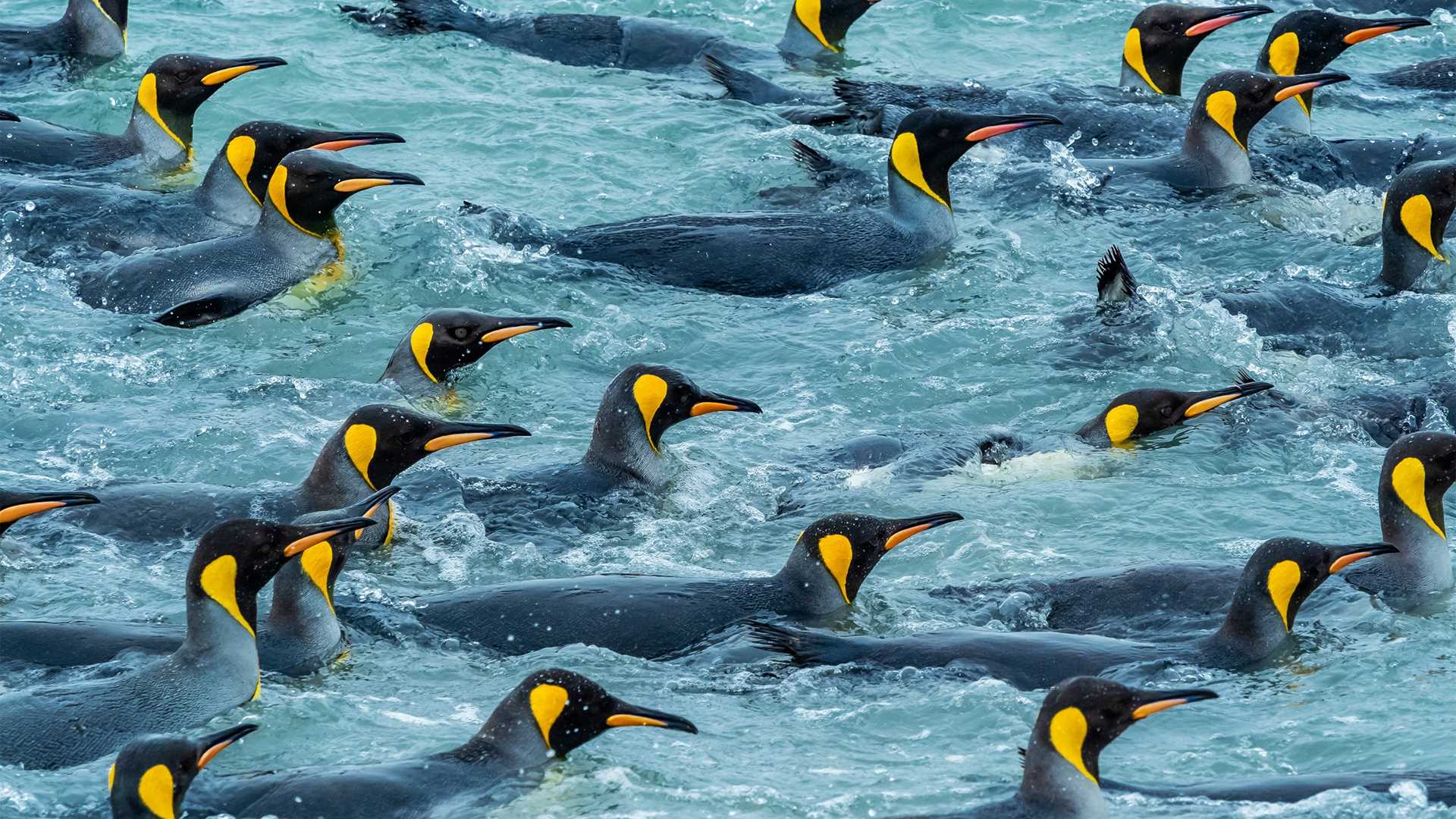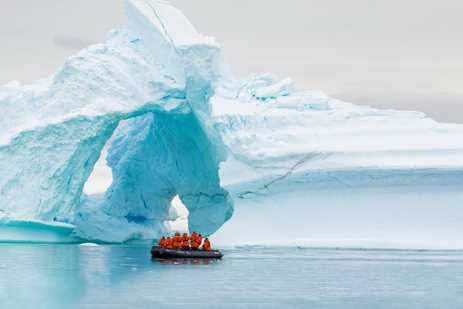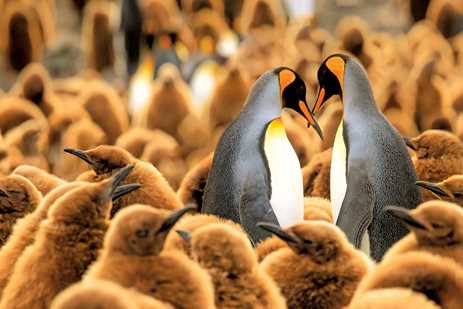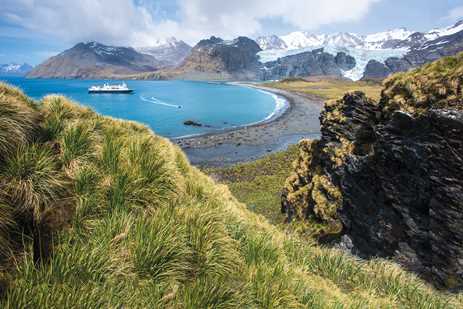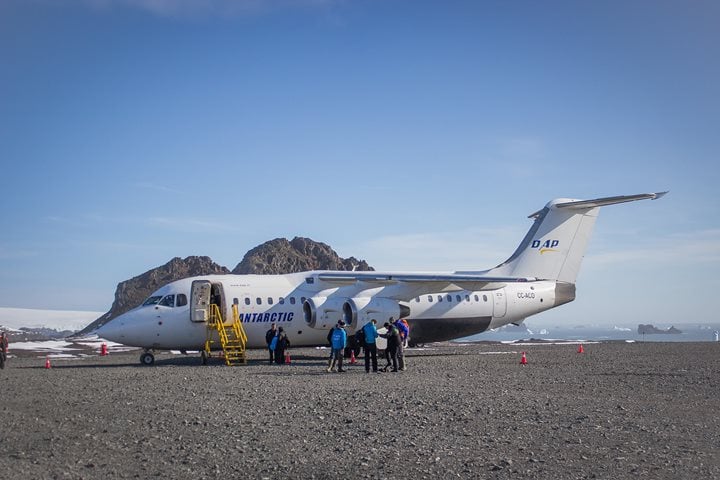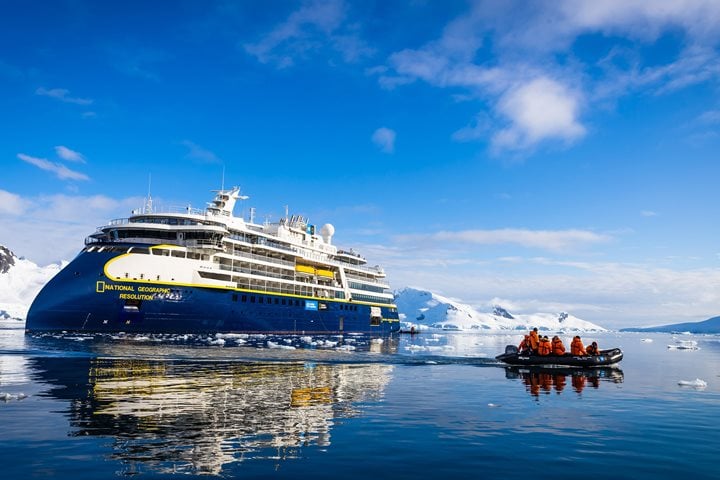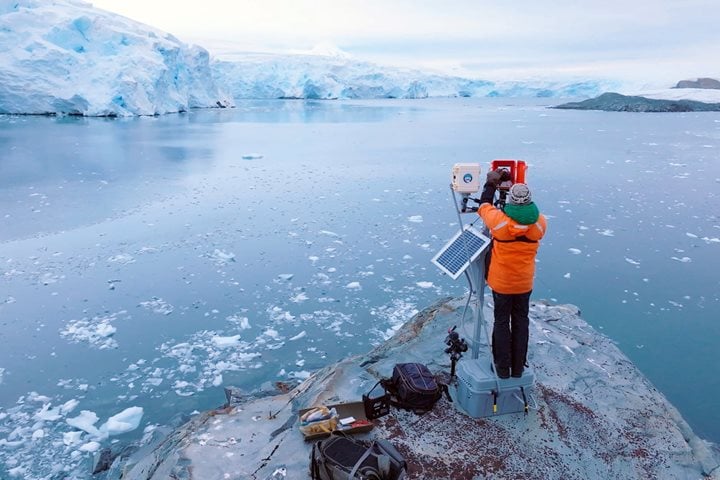What do you get when you combine amazing wildlife with some of the world’s most spectacular polar scenery? The Antarctic island of South Georgia. South Georgia really is a wildlife paradise, a place where you can stroll along a wide beach where hundreds of thousands of penguins come ashore to raise their chicks, watch jousting matches between elephant seal bulls that weigh more than three tons or keep a lookout for one of the world’s rarest songbirds, all while surrounded by glaciers and icy peaks that rise to nearly 10,000 feet.
Get Inspired by Photos, Videos, Webinars, Stories, and Exclusive Offers.
Sign Up
South Georgia is often called “The Serengeti of the Antarctic,” but as a naturalist for National Geographic-Lindblad Expeditions I have worked there for almost 20 years and I can tell you: it’s actually even better. The sheer numbers of animals are greater; the mountainous landscape and drifting icebergs offshore have to be seen to be believed; and there are no safari vehicles here—you are free to wander at your leisure among the thousands of seals, penguins and seabirds. Just like the Serengeti, South Georgia has its own Big Five—the best of the best wildlife sightings that everyone looks forward to most. Let's take a closer look at some of at the fantastic wildlife highlights of this unique island.
Elephant Seals
Elephant seals are definitely the biggest of South Georgia’s Big Five. Adult females usually weigh at least 1,000 pounds, but their male counterparts can tip the scales at over four tons and grow to nearly 20 feet long—by far the largest seals in the world. When you spot elephant seals they are usually lounging on the beach, but at sea they are among the world’s best divers, descending to over 5,000 feet and staying down as long as two hours in search of the squid that are their prey. They make some pretty crazy noises with those huge noses, too.
King Penguins
The second-largest penguin the world, king penguins are bold, curious birds that seem as interested in us as we are in them. As soon as guests come ashore they’ll start waddling over, stretching their necks out to get a closer look at everyone and their cameras. It’s a lot of fun to meet them one on one, but the most impressive thing about the kings of South Georgia is their incredible numbers. Imagine standing on a low rise and looking out over a colony of more than 300,000 birds! It’s a genuinely indescribable experience; the landscape is packed with so many penguins that their calls seem to all blend together into a constant low roar, like the sound of distant surf.
Antarctic Fur Seals
South Georgia is home to roughly five million Antarctic fur seals—that’s about 95 percent of the world’s population and double the number of animals in the famous migration of wildebeest and zebras in the Serengeti. Males can weigh up to 300 pounds; females are only about one quarter of that and their pups are about the size of a loaf of bread when they are born, which makes them pretty cute. A couple of months later they are already learning to swim, heading for the water in big groups, as playful as puppies, leaping, tumbling and nipping at one another in the shallows.
Wandering Albatross
Wandering albatross have a wingspan of up to 11 feet, the longest of any living bird and pretty close to twice my height. But, even so, it’s not their size that creates the main impression when they glide past the ship. Instead, what really strikes me most is the elegant, effortless grace with which they ride the wind, cutting between the crests of the waves and soaring up again on the invisible currents of air that flow over the sea. Like us, these magnificent birds are just visitors to South Georgia, stopping by every two years or so to raise a single chick before returning to the endless polar winds that are their true home.
South Georgia Pipits
The smallest member of South Georgia’s Big Five is also the star of a huge conservation success story. South Georgia pipits are the southernmost-nesting songbird in the world, and they are endemic to the island—they aren’t found anywhere else on the planet. When I first worked at South Georgia in 2003, pipits were a rare sight. They had been nearly driven to extinction by introduced rats, hanging on just on a few tiny islets off the coast. Then, beginning in 2011, a gigantic multi-national effort supported by National Geographic-Lindblad Expeditions and travelers from all over the world succeeded in eradicating the rats from the entire island. Since then the pipits have made a wonderful comeback and are easy to find on many of South Georgia’s beaches. Although they’ve become common, their return from the brink of extinction makes them even more special.

